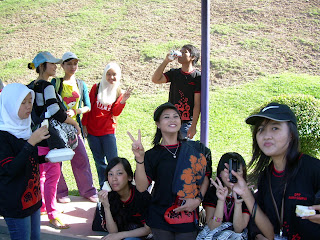 ni kat luar bilik kmi...cantik kan...
ni kat luar bilik kmi...cantik kan... madam....mdm.siti n mdm adriana
madam....mdm.siti n mdm adriana mana la pakcik bus ni...????
mana la pakcik bus ni...???? ni la..dorang..susah mau cakap
ni la..dorang..susah mau cakap zira posing maut..wahh!!!eh2..ain mau p mana tue???
zira posing maut..wahh!!!eh2..ain mau p mana tue???
ni la rupa2 org yamg mau p trip..adui na apip..mata mu tue..kihkihkih....







